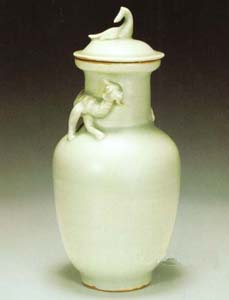| Legole.Com Discover china. Explore the beauty and wonder of the land, people, and culture of China. |
 |
|
|
 |
| |
 The military weakness of the Northern Song (960 - 1127) eventually took its toll. In 1127, the Jin army sacked the Northern Song capital of Kaifeng, taking Emperor Huizong and most of his family hostage. Huizong's ninth son, Zhaogou, fled to the south. That same year, the Song court re-established itself in Lin'an (present Hangzhou City), where it continued to rule for another 150 years as the Southern Song Dynasty. Zhaogou is known historically as Emperor Gaozong. The military weakness of the Northern Song (960 - 1127) eventually took its toll. In 1127, the Jin army sacked the Northern Song capital of Kaifeng, taking Emperor Huizong and most of his family hostage. Huizong's ninth son, Zhaogou, fled to the south. That same year, the Song court re-established itself in Lin'an (present Hangzhou City), where it continued to rule for another 150 years as the Southern Song Dynasty. Zhaogou is known historically as Emperor Gaozong.
The period of the Southern Song is neither a period of power nor stability and the dynasty only controlled the area south of the Yangtze River. When the dynasty was newly established, instead of appointing competent people to carry out reforms and devise effective defensive strategies, Emperor Gaozong did the opposite. By blocking the efforts of his talented Prime Minister Ligang he reversed the dominant military strategy from one of active resistance to passive defence. In addition, talented people were supplanted and less able and often incapable ones were appointed to very important positions.
The Jin army continued its attempts to conquer the area south of the Yangtze River. In order to avoid further hostilities, following the founding of the dynasty, Emperor Gaozong made peace with the Jin, accepting humiliating terms that included the payment of tribute.
After the emergence of the Mongols, the three powers in the north - the Mongols, the Western Xia and the Jin - constantly fought against each other. Ideally, this presented the Southern Song with its best opportunity fro expansion. However, as a defensive strategy had been adopted, no action was taken at all. It was not until the Western Xia vanished and the Jin, having lost most of its northern territories, turned to attack the Southern Song that they were forced to fight. Although the Southern Song troops held the southward marching Jin army at bay, they also suffered heavy losses. Meanwhile the Mongolian forces advanced on to the northern bank of the Yellow River, but the Southern Song lacked sufficient strength left to march against these new invaders. Even worse, with the Jin virtually defeated, the Southern Song foolishly decided to unite with the Mongols to continue to resist them. Sadly, the Song was quite unaware that their new allies were going to be far more dangerous than the Jin.
Soon after conquering the Jin, the Mongols then set their sights on the Southern Song. In 1276, the Mongolian army captured Hangzhou, putting an end to the Southern Song Dynasty. Some of the Song ministers went south to Fujian and Guangdong to reestablish the mini-Song court which was short-lived, ending in the 2nd year of Xiangxing (1279) at Yashan.
Despite the precarious military situation, the Southern Song period was one of prosperity and creativity.
The art of the Southern Song Dynasty developed in an urban culture characterized by active foreign trade and the emergence of a merchant class eager for diversions and entertainments previously available only to the nobility. These new patrons particularly enjoyed painting with a realistic style that depicted the pleasures of daily life.
Printing had been invented during the late Tang. By the time that the Southern Song assumed power books were more widely available and much less expensive. Increased access to education and the expanded civil service examination system brought more scholars into government service than ever before. The Song period also saw a revival of Confucianism, known as Neo-Confucianism. |
|
|
 |
|
